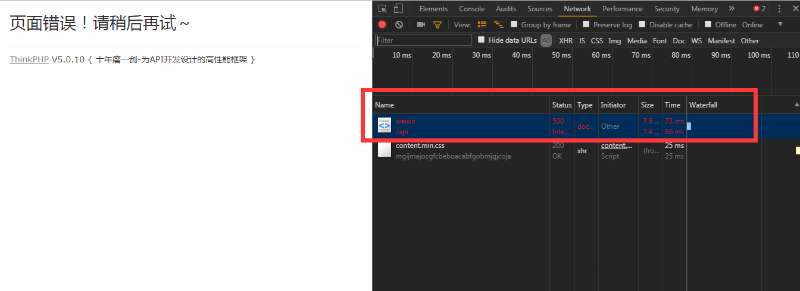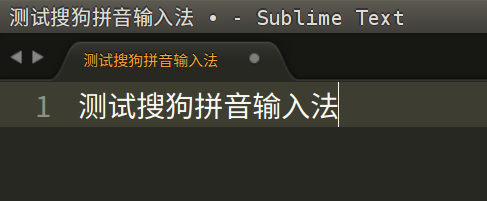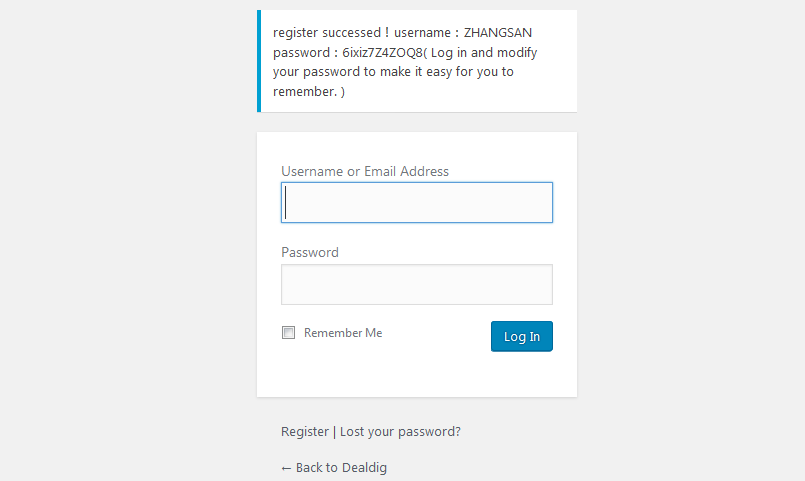在一个业务需求的驱使下,笔者尝试着处理把微信公众号的服务器配置的url绑定到tp5中,就是以tp5作为后端服务,提供API服务。
网上找了很多都不是自己要找的,天随人愿,终于看到了这么一篇文章:微信公众号连接thinkphp5
正是自己想要找的,如果大家想要关注的话,请关注他(QQ:820032120),也是在这个作者的帮助下,解决了这个问题,很热心的一个小伙。
好的,基于他提供的方案,应该是没有问题,但是我根据这个实践,发现有问题,老是报错:

为了方便测试,我新建了一个模块,命名为:weixin
然后在这个模块的控制器中把以下代码贴进去:
<?php
namespace app\weixin\controller;
use think\Controller;
use think\Loader;
use think\Session;
class Index extends Controller{
public function Index(){
//验证消息
if(isset($_GET['echostr'])){
$echoStr = $_GET["echostr"];
if($this->checkSignature()){
header('content-type:text');
echo $echoStr;
exit;
}
}else{
}
}
//检查签名
private function checkSignature()
{
$signature = $_GET["signature"];
$timestamp = $_GET["timestamp"];
$nonce = $_GET["nonce"];
$token = 'zuijiadaxueweixin';
$tmpArr = array($token, $timestamp, $nonce);
sort($tmpArr, SORT_STRING);
$tmpStr = implode($tmpArr);
$tmpStr = sha1($tmpStr);
if($tmpStr == $signature){
return true;
}else{
return false;
}
}
}
?>
这个注意与原创作者相互区别,做个对比的话,这里其实也就是把响应消息删除了。
原创的写法如下:
<?php
namespace app\weixin\controller;
use \think\Request;
use think\Db;
class Index {
public function Index(){
//验证消息
if(isset($_GET['echostr'])){ //微信服务器和你的服务器第一次通讯会带上echostr
$echoStr = $_GET["echostr"];
if($this->checkSignature()){
header('content-type:text');
echo $echoStr;
exit;
}
}else{
$this -> responseMsg();
}
}
//检查签名
private function checkSignature()
{
$signature = $_GET["signature"];
$timestamp = $_GET["timestamp"];
$nonce = $_GET["nonce"];
$token = '123456798';
$tmpArr = array($token, $timestamp, $nonce);
sort($tmpArr, SORT_STRING);
$tmpStr = implode($tmpArr);
$tmpStr = sha1($tmpStr);
if($tmpStr == $signature){
return true;
}else{
return false;
}
}
//响应消息
public function responseMsg()
{
$postStr = isset($GLOBALS["HTTP_RAW_POST_DATA"]) ? $GLOBALS["HTTP_RAW_POST_DATA"] : "" ;
if (!empty($postStr)){
$postObj = simplexml_load_string($postStr, 'SimpleXMLElement', LIBXML_NOCDATA);
$RX_TYPE = trim($postObj->MsgType);
switch ($RX_TYPE)
{
case "event":
$result = $this->receiveEvent($postObj);
break;
case "text":
$result = $this->receiveText($postObj);
break;
case "image":
$result = $this->receiveImage($postObj);
break;
case "location":
$result = $this->receiveLocation($postObj);
break;
case "voice":
$result = $this->receiveVoice($postObj);
break;
case "video":
$result = $this->receiveVideo($postObj);
break;
case "link":
$result = $this->receiveLink($postObj);
break;
default:
$result = "unknown msg type: ".$RX_TYPE;
break;
}
echo $result;
}
}
public function testinfo(){
echo "hello world";
}
}
在笔者的实践下,发现这个有点问题,就是报错,但是排查了,错误没有消除。后来就有了我上面的那个精简版。这个是在实践中获得验证的,没有报错。其实阅读起来也很容易理解:一个是检查消息、另一个是验证签名。
如果还需要有响应消息,应该是要把原创作者的后面那部分加上去。但是根据自己的实践,当我们把响应消息加上去的时候,又报错了,所以之所以作者写的方法报错,那么报错的地方应该是响应消息那块。大家在实践的时候,多多留意。
这里来个题外话,在解决这个问题的过程中,花了很长时间处理git的排错,笔者开着两台电脑,两边都编辑着同一个文件夹下的内容,然后就是两边提交,后面就发生冲突了。后面总是报错,什么冲突没有解决之类的,或者是提交之类的,但是还有一种情况也发生了,情况是这样的,我其中一台是用的linux桌面版,另一台是用的是windows,结果当我从windows系统编辑完成后提交的东西,我在linux上打开会多了一些符号:^M,这个是windows的换行符,平常我们是看不到的,需要特殊的编辑器才行。
本来这里一直发现没有啥问题的,可是一直报错,却不知道哪里有问题,这个时候,我们不妨用linux的Emditor编辑器.
 哈勃私语
哈勃私语



